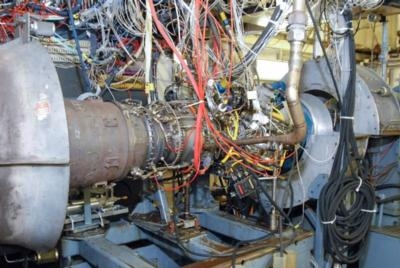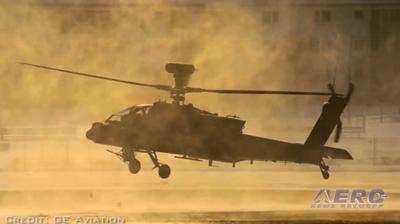Mon, Apr 30, 2018
Part Of An Improved Turbine Engine Program
GE Aviation hosted the U.S. Army for the successful Preliminary Design Review (PDR) of the T901-GE-900 engine in early March. The T901 is GE Aviation's engine for the Improved Turbine Engine Program (ITEP), the U.S. Army's undertaking to re-engine its Boeing AH-64 Apaches and Sikorsky UH-60 Black Hawks. The PDR is a major milestone within the Technology Maturation and Risk Reduction (TMRR) contract, a $102 million, 24-month contract the Army awarded GE in September 2016.

The Army is in the process of down selecting to one engine manufacturer for the Engineering and Manufacturing Development (EMD) phase by the end of 2018. The U.S. Army Contracting Command (ACC), based at Redstone Arsenal in Huntsville, Ala., released its request for proposals for the EMD last November. GE Aviation submitted the first phase of the proposal in February and is currently preparing the second and final phase of its proposal based on the engine configuration reviewed at the PDR.
GE Aviation successfully completed a fit test with the Army this past December using a full-scale engine mockup. It demonstrated that the T901 engine seamlessly integrates with the Apache and Black Hawk airframes. GE's experience in powering these aircraft missions with the T700 engine over the past four decades has informed its development of the T901; it positions the Army and GE to make a smooth transition from the T700 to the T901.
GE has invested more than $9 billion in maturing commercial technologies applicable to the T901 and more than $300 million to develop and test turboshaft-specific technologies ahead of the PDR. GE funded and successfully completed testing a T901 prototype engine, as well as component tests. These company-funded investments demonstrate GE's commitment to providing only the most advanced technologies available to the Warfighter and the Department of Defense.

"The simple, proven, single-spool design of the T901, coupled with GE's advanced commercial and military technologies, allow it to exceed the Army's requirements," said Ron Hutter, executive director of the T901 program. "The T901 is lighter, less complex and more maintainable for the Warfighter, which leads to improved readiness and reduced life-cycle costs." Learn more about the T901's proven, single-spool design here.
The T901 incorporates many proven technologies that will advance Army Aviation into the future of vertical lift, including additive manufacturing, 3D aerodynamic design tools, ceramic matrix composites (CMCs), advanced cooling technologies and sand tolerant technologies. GE has spent decades developing and maturing these technologies in its commercial and military engines businesses.
The incorporation of additive (3-D printed) parts in the T901 leverages investments in new production plants, equipment and designs utilized for GE's commercially-funded programs such as GE's Catalyst advanced turboprop engine for the Cessna Denali. The Catalyst engine is the world's first turboprop engine with 3-D printed parts. Additive manufacturing allows GE to create advanced, cost effective parts at an accelerated rate that reduce fuel burn, decrease weight and increase durability. For example, the T901 includes an additive part that reduces an assembly of more than 50 subcomponents into one part.
(Source: GE Aviation news release. Images from file)
More News
Airport Marking Aids Markings used on runway and taxiway surfaces to identify a specific runway, a runway threshold, a centerline, a hold line, etc. A runway should be marked in ac>[...]
"It is extremely difficult, if not impossible, for manned aircraft to see a drone while conducting crop-enhancing and other aerial applications at low altitudes and high speeds. We>[...]
Aero Linx: The Skyhawk Association The Skyhawk Association is a non-profit organization founded by former Skyhawk Pilots which is open to anyone with an affinity for the A-4 Skyhaw>[...]
“The T-54A benefits from an active Beechcraft King Air assembly line in Wichita, Kansas, where all required METS avionics and interior modifications are installed on the line>[...]
Aero Linx: Aerostar Owners Association The Association offers the Aerostar Owner a unique opportunity to tap an invaluable source of information concerning the care and feeding of >[...]
 ANN's Daily Aero-Term (04.28.24): Airport Marking Aids
ANN's Daily Aero-Term (04.28.24): Airport Marking Aids Aero-News: Quote of the Day (04.28.24)
Aero-News: Quote of the Day (04.28.24) ANN's Daily Aero-Linx (04.28.24)
ANN's Daily Aero-Linx (04.28.24) Aero-News: Quote of the Day (04.29.24)
Aero-News: Quote of the Day (04.29.24) ANN's Daily Aero-Linx (04.29.24)
ANN's Daily Aero-Linx (04.29.24)




